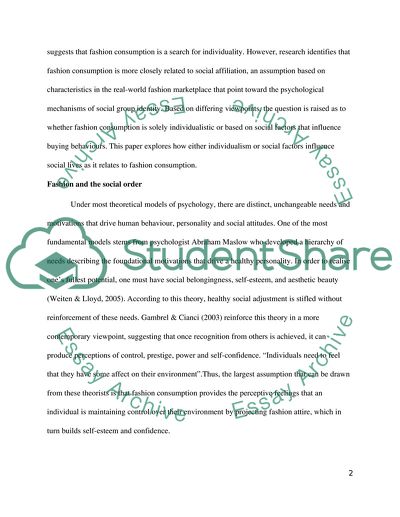Cite this document
(“Fashion and consumer culture Essay Example | Topics and Well Written Essays - 3250 words”, n.d.)
Fashion and consumer culture Essay Example | Topics and Well Written Essays - 3250 words. Retrieved from https://studentshare.org/family-consumer-science/1582276-fashion-and-consumer-culture
Fashion and consumer culture Essay Example | Topics and Well Written Essays - 3250 words. Retrieved from https://studentshare.org/family-consumer-science/1582276-fashion-and-consumer-culture
(Fashion and Consumer Culture Essay Example | Topics and Well Written Essays - 3250 Words)
Fashion and Consumer Culture Essay Example | Topics and Well Written Essays - 3250 Words. https://studentshare.org/family-consumer-science/1582276-fashion-and-consumer-culture.
Fashion and Consumer Culture Essay Example | Topics and Well Written Essays - 3250 Words. https://studentshare.org/family-consumer-science/1582276-fashion-and-consumer-culture.
“Fashion and Consumer Culture Essay Example | Topics and Well Written Essays - 3250 Words”, n.d. https://studentshare.org/family-consumer-science/1582276-fashion-and-consumer-culture.


